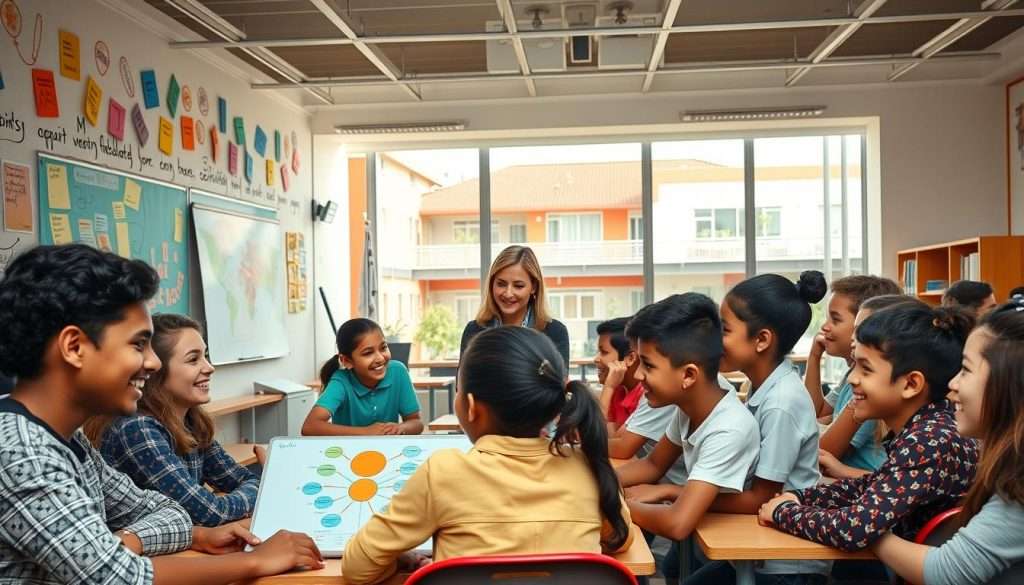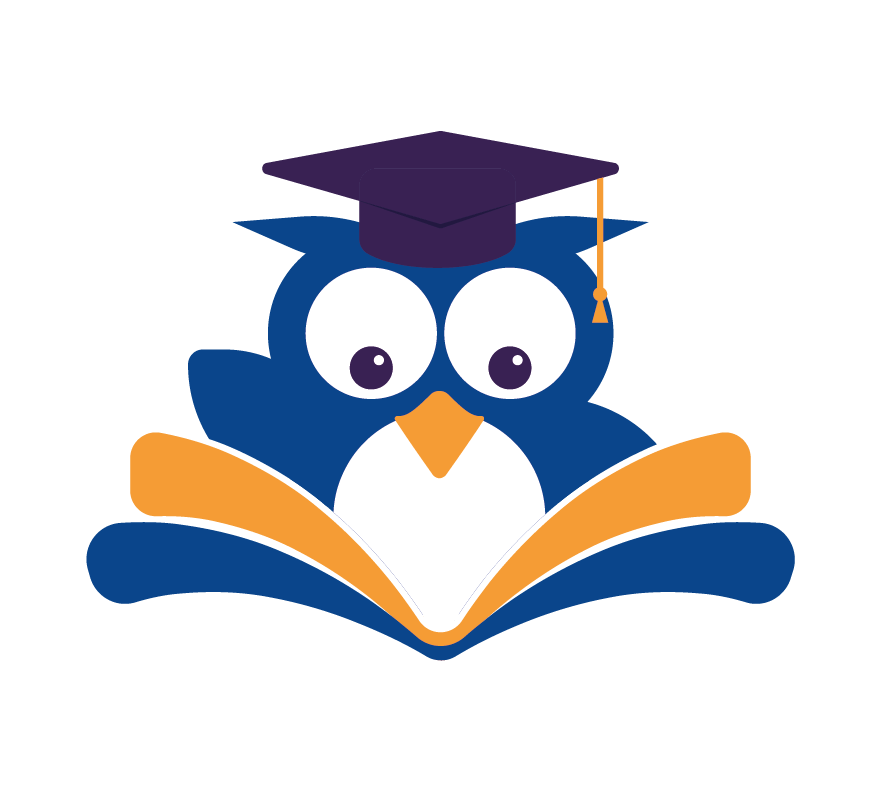Knowing how you absorb and process information can change your life. By understanding your learning preferences, you can improve your study habits. This makes the most of your time and resources.
Everyone learns differently. Finding out your learning style can make studying better. In this article, we’ll look at different learning preferences. We’ll also share how to reach your full potential.
Key Takeaways
- Understanding your individual learning preferences is crucial for effective learning.
- Identifying your learning style can help you tailor your study habits.
- Optimizing your study habits can lead to better retention and understanding.
- Everyone has a unique way of learning and retaining information.
- Exploring different learning styles can help you unlock your full potential.
The Science Behind Learning Styles: What Research Tells Us
Let’s explore how we learn best. The idea of learning styles has been studied in educational psychology for years. It’s not just about knowing people learn differently. It’s about understanding the science behind these differences.
The Evolution of Learning Style Theories
The multiple intelligences theory was one of the first to suggest different learning styles. Since then, the VARK model has categorized learners into visual, auditory, reading/writing, and kinesthetic types.
From Multiple Intelligences to Modern Approaches
Modern theories have expanded on earlier ones, offering a deeper look at learning styles. The VARK model, for example, helps pinpoint individual preferences.
Criticisms and Validations in Educational Psychology
Research in educational psychology has both supported and questioned these theories. Some say learning styles are not as fixed as thought. Others believe in tailoring education to fit individual needs.
| Theory | Description | Key Features |
|---|---|---|
| Multiple Intelligences | Suggests multiple types of intelligence | Varied learning styles |
| VARK Model | Categorizes learners into four styles | Visual, Auditory, Reading/Writing, Kinesthetic |
How Your Brain Processes Information Differently
Our brains process information in unique ways. This knowledge helps tailor learning to fit individual needs.
By understanding the science of learning styles, we can reach our full potential. Whether you’re a visual or kinesthetic learner, knowing your style can greatly improve your learning.
The VARK Model: Understanding the Four Primary Learning Styles
The VARK model is a well-known framework that sorts learners into four main styles: visual, auditory, reading/writing, and kinesthetic. It helps people know their favorite ways to learn, making school better.
The VARK model breaks down into four learning styles. Each style shows how people take in information differently. Let’s explore each style to see how they work.
Visual Learning: Processing Through Images and Spatial Relationships
Visual learners get information best through pictures and how things are arranged. They like diagrams, charts, and videos. For example, a visual learner might use mind maps to organize info, making it easier to remember.
Auditory Learning: Processing Through Sound and Discussion
Auditory learners learn best through sound and talking. They do well with lectures, group talks, and audio. For example, an auditory learner might record lectures to listen to later and get a better grasp.
Reading/Writing Learning: Processing Through Text and Words
Reading/writing learners like to get info through text and words. They’re good at reading books, taking notes, and writing essays. A reading/writing learner might make detailed outlines to keep their thoughts and study materials in order.
Kinesthetic Learning: Processing Through Movement and Touch
Kinesthetic learners learn best by doing things and touching things. They do well with hands-on activities, experiments, and practical exercises. For instance, a kinesthetic learner might use math manipulatives to understand complex ideas better.
| Learning Style | Preferred Methods | Examples |
|---|---|---|
| Visual | Images, diagrams, charts | Mind maps, infographics |
| Auditory | Lectures, discussions, audio recordings | Recorded lectures, group discussions |
| Reading/Writing | Textbooks, notes, essays | Detailed outlines, writing summaries |
| Kinesthetic | Hands-on activities, experiments | Manipulatives, practical exercises |
Knowing the VARK model and your learning style can really help your learning. By using study methods that fit your style, you can remember and understand things better.
How to Identify Your Dominant Learning Style
Finding out your preferred learning style is key to learning better. Knowing how you learn best lets you study in a way that sticks. This makes understanding easier.
Self-Assessment Techniques and Quizzes
Self-assessment tools and quizzes are great for figuring out your learning style. They show your strengths and areas to work on in different ways of learning.
Reliable Online Assessment Tools
Many online tools can help find your learning style. Some well-known ones are:
- VARK questionnaire
- Kolb’s Learning Style Inventory
- Felder-Silverman Learning Style Model
Interpreting Your Results Accurately
After taking a test, it’s important to understand your results well. Look for patterns in your answers. Think about how they match your study habits and everyday life.
“Understanding your learning style is not about labeling yourself, but about understanding how you can learn more effectively.”
Recognizing Your Learning Preferences in Daily Activities
Watching how you learn naturally in daily life can also give clues. See if you like to see things, talk about them, read about them, or do them hands-on.
| Learning Style | Characteristics | Effective Study Habits |
|---|---|---|
| Visual | Prefers images, diagrams, and videos | Watching video lectures, using diagrams |
| Auditory | Learns through sound and discussion | Listening to podcasts, group discussions |
| Reading/Writing | Prefers text-based information | Reading textbooks, taking detailed notes |
| Kinesthetic | Learns through movement and touch | Hands-on experiments, practical exercises |
Visual Learners: Strategies for Success
For visual learners, the key to success is using the right tools and techniques. This helps them make the most of their unique learning style.
Effective Note-Taking Methods for Visual Learners
Visual learners do well with note-taking methods that use visuals. Two good techniques are:
- Mind mapping
- Color-coding
Mind Mapping and Color-Coding Techniques
Mind mapping creates a visual map of information, linking ideas with diagrams. Color-coding helps organize by using different colors for different info.
Using a visual organization system keeps study materials neat and easy to find. This can include folders, binders, or digital tools with visual cues.
Study Tools and Resources for Visual Processing
There are many study tools for visual learners, including:
| Tool | Description |
|---|---|
| MindMeister | A mind mapping tool that helps organize ideas visually. |
| Graphical organizers | Visual tools that help structure information. |
Overcoming Visual Learning Challenges
While visual learning has its benefits, there are challenges to face, such as:
“The art of teaching is the art of assisting discovery.” – Mark Van Doren
To beat these challenges, visual learners can mix visual and other learning methods. This helps strengthen their understanding.
Auditory Learners: Maximizing Sound-Based Learning
If you’re an auditory learner, you know that sound is your superpower. You learn best by listening. This means you get a lot from recordings, discussions, and verbal processing.
Recording and Listening Techniques
Using recording techniques is a great way to learn. You can record lectures or study materials. Then, listen to them again to really get it.
You can use apps or devices to record. Listen back while you’re on the go or during breaks.
Group Discussion and Verbal Processing Methods
Talking about what you’re studying is also super helpful. Group discussions let you process information out loud. This makes it stick better in your mind.
Look for study groups or online forums. They’re great places to talk about what you’re learning.
Overcoming Auditory Learning Challenges
Auditory learners sometimes struggle with distractions or hard-to-read texts. Here are some tips to help:
- Managing Distracting Environments: Find a quiet spot to study. Or use noise-cancelling headphones to block out distractions.
- Converting Text-Heavy Material to Audio: Try text-to-speech software. It turns written stuff into audio, making it easier to listen to.
Managing Distracting Environments
To deal with distractions, look for a quiet place to study. Or use headphones to block out noise. This helps you focus better.
Converting Text-Heavy Material to Audio
Text-to-speech software is a big help. It turns hard texts into audio. This is especially useful for complex or dense materials.
Reading/Writing Learners: Text-Based Learning Approaches
If you’re a reading/writing learner, you’ll find text-based learning great. You do well with reading and note-taking strategies. Writing helps you learn and remember information better.
Effective Reading and Note-Taking Strategies
It’s key to have good reading and note-taking skills. Techniques like summarizing and paraphrasing help you understand and remember better.
Summarization and Paraphrasing Techniques
Writing in your own words helps you grasp information deeply. Paraphrasing keeps the original meaning but uses your words.
List-Making and Outline Creation
Lists and outlines are great for organizing info. They make complex topics easier to handle.
| Note-Taking Method | Description | Benefits |
|---|---|---|
| Summarization | Condensing information into a shorter form | Enhances understanding and retention |
| Paraphrasing | Rewriting information in your own words | Improves comprehension and recall |
| List-Making | Organizing information into lists | Facilitates quick review and reference |
Writing as a Learning Tool
Writing is more than just talking; it’s a learning tool. Writing about what you learn helps you remember it better.

Kinesthetic Learners: Learning Through Action and Experience
If you’re a kinesthetic learner, you love to get involved in learning. You use your body to understand and remember things. This method works well for those who enjoy doing things with their hands.
Incorporating Movement into Study Sessions
To use kinesthetic learning, add movement to your study time. You might pace while reading or use gestures to remember things. Standing desks are also helpful, letting you move while you work.
Hands-On Learning Activities and Experiments
Hands-on activities and experiments are key for kinesthetic learners. Labs, workshops, and DIY projects help you learn by doing. For example, science students can do experiments, and language learners can talk with native speakers.
Overcoming Kinesthetic Learning Challenges in Traditional Settings
Kinesthetic learning can be tough in traditional classrooms. To help, use tactile learning materials and manipulatives. Also, taking breaks to move around keeps you focused.
Standing Desks and Movement Breaks
Standing desks and movement breaks help you stay active while studying. Standing or stretching boosts your energy and keeps you alert.
Tactile Learning Materials and Manipulatives
Tactile learning materials and manipulatives are great for kinesthetic learners. Things like flashcards, puzzles, and models help you understand complex ideas. They make learning fun and interactive.
| Kinesthetic Learning Strategies | Benefits |
|---|---|
| Incorporating movement into study sessions | Improved focus and retention |
| Hands-on activities and experiments | Practical experience and deeper understanding |
| Tactile learning materials and manipulatives | More interactive and engaging learning experience |
Applying Learning Styles in Different Contexts
Knowing your learning style helps you fit into various learning spots. It lets you adjust how you learn in school, work, or hobbies. This way, you can learn better and enjoy it more.
Learning Styles in Academic Environments
In school, knowing your learning style changes how you study. Visual learners do well with pictures and charts. Auditory learners like listening to teachers or joining talks. By using your learning style, you can study smarter and get better grades.
| Learning Style | Academic Strategies |
|---|---|
| Visual | Use diagrams, mind maps, and visual aids |
| Auditory | Listen to lectures, participate in discussions |
| Kinesthetic | Engage in hands-on activities, experiments |
Learning Styles in Professional Development
At work, knowing your learning style boosts your training. For example, if you’re a reading/writing learner, you’ll do well with written materials. Kinesthetic learners might prefer doing things by hand. Using your learning style helps you grow and do better at work.
“The way we learn is fundamental to our success in all areas of life.”
Learning Styles for Personal Growth and Hobbies
Learning styles apply to more than just school or work. They help with learning new things, like languages, music, or sports. By learning in a way that fits you, you’ll learn faster and have more fun.

Conclusion: Embracing Your Unique Learning Journey
Now that you know your learning style, it’s time to use it. By understanding your learning preferences, you can make your study habits better. Whether you’re a visual, auditory, reading/writing, or kinesthetic learner, embracing your unique learning journey is key to achieving academic success.
As you continue on your learning path, remember that your learning style is not a limitation, but an opportunity to excel. Experiment with different study habits and techniques to find what works best for you. By doing so, you’ll be able to absorb and process information more effectively, making the most of your time and resources.
So, take the first step today and start optimizing your learning experience. You got this!

